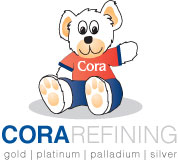It may lack the energy, personality and appeal of Wall Street, but the dental refining industry changes every day. Based on several economic factors, the market prices of precious metals fluctuate on a regular basis. In turn, this impacts the value of the precious metals, and the amount our customers earn from them. In addition to fire assaying and our other dental refining methods, understanding how precious metal prices change is integral to learning how we calculate your earnings.
Precious Metals for Dental Work
In the dental refining industry, there are four primary precious metals. These are gold, platinum, palladium, and silver, with a decreasing price hierarchy. This blog post will discuss how prices are determined for these precious metals.
Supply and Demand
All markets seem to come down to those two words. Precious metals are no different.
Highly sought-after precious metals may be difficult to come by at times; at others, they are readily available. While the price hierarchy for these precious metals may be consistent, the ever-changing availability makes it impossible to predict their precise cost.
Furthermore, these supply and demand standards are based not only on current availability, but also on anticipated supply and demand. If credible financial institutions believe that future supply will be high and demand low, then prices will be lower. Conversely, precious metal prices will skyrocket if the reverse is true. Without the proper figures to make this prediction, prices will generally be higher.
Spot Vs. Future Prices
Spot prices refer to the actionable value of an ounce of the specific precious metal at the present moment. In other words, if metals were exchanged for currency right now, it would use the spot price.
This is in contrast to the future price, in which buyers pay a certain amount of money for precious metals that may or may not increase in value. Though the price would be secure, the transaction would necessarily be a loss for one of the two involved parties.
Because most dental refining transactions take place in the present, we primarily use spot prices.
What Affects Spot Prices?
Supply and demand have a demonstrably large impact on precious metal prices, but they are not the only determining factor. Shifts in the economy, political/world events, and activity within other financial institutions impact spot prices.
Not All Metals Are Created Equal
To qualify for these internationally designated prices, precious metals must meet certain standards. In other words, if the metal collected from dental scrap is considerably lower in quality than other metals, it may not earn the same return as a better specimen.
What Resources Do We Pay Attention To?
To keep cash for dental scrap prices fair and accurate, we closely monitor prices dictated by New York’s COMEX, as well as the London Bullion Market Association. The prices that dental practices earn from dental scrap should fluctuate (even slightly) on a daily basis. If that is not the case with your current dental refining organization, you should strongly consider reevaluating, and finding a more fair and responsive company.
Contact Cora Refining
Cora Refining pays close attention to dental refining trends, precious metal prices, new technologies and more to ensure that you are paid the appropriate amount. As a dedicated dental refining company without any non-dental clients, we have mastered the techniques involved in precious metal extraction. Contact us for more information about how our dental refining company can help your practice to earn additional income.

